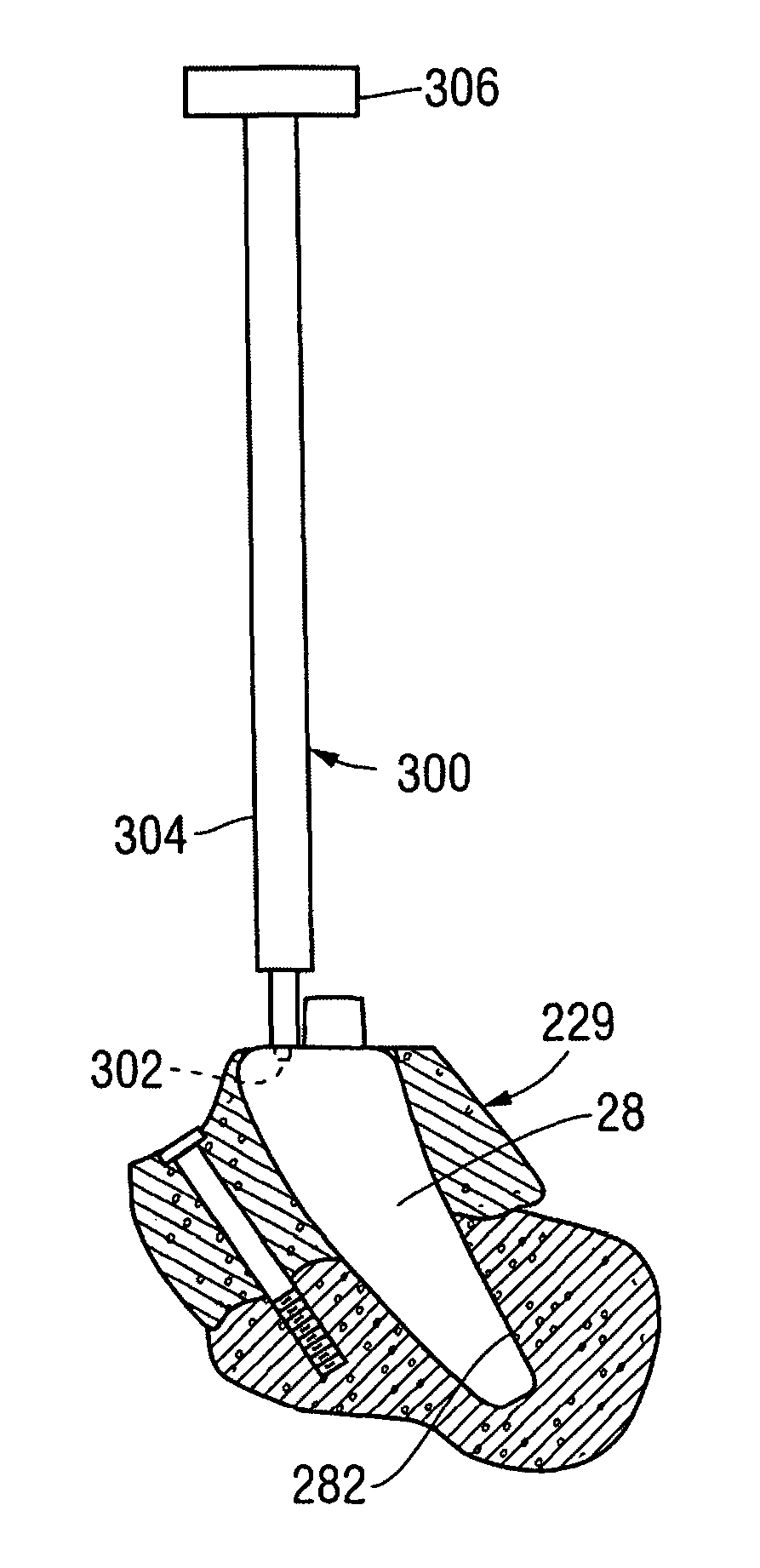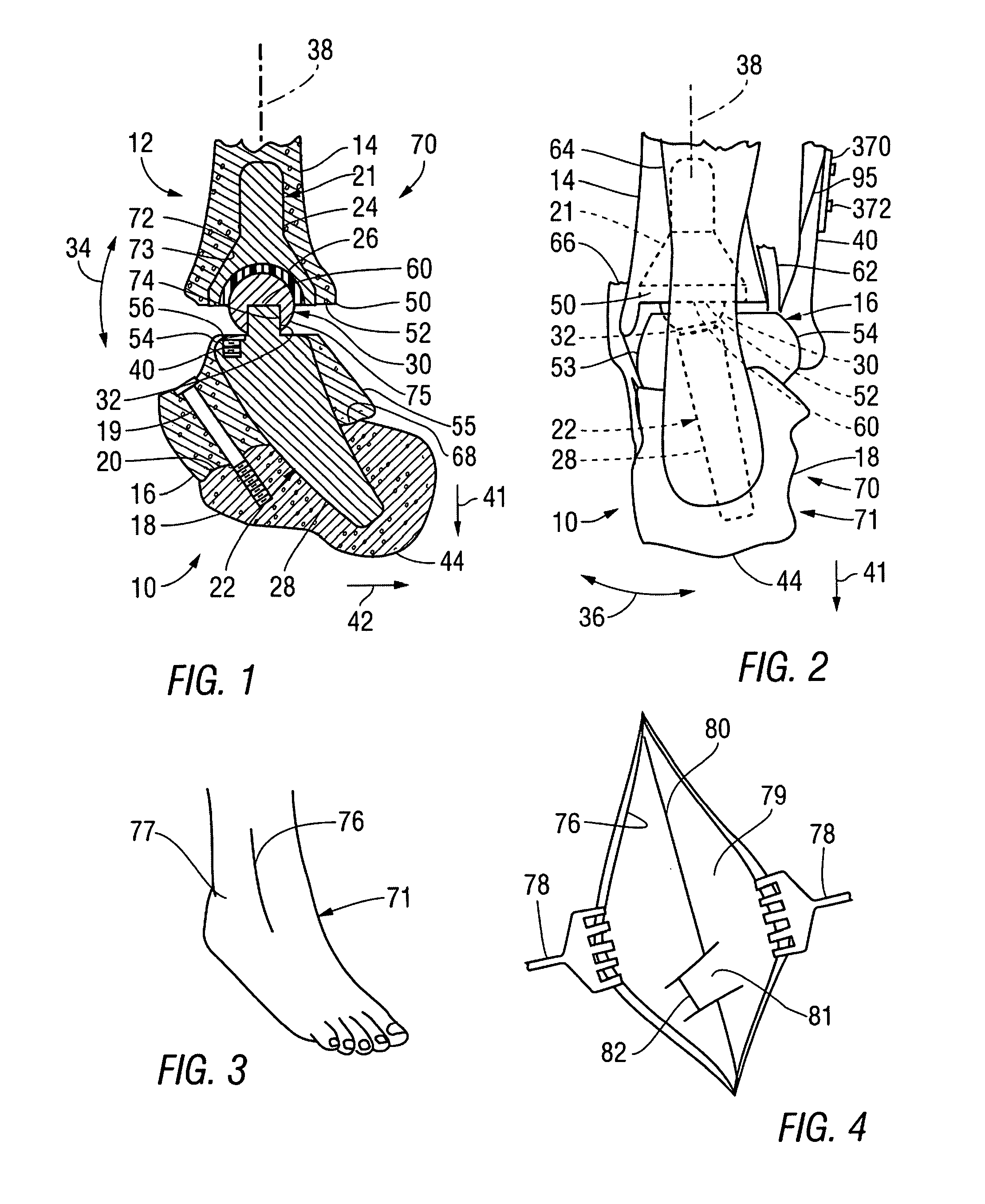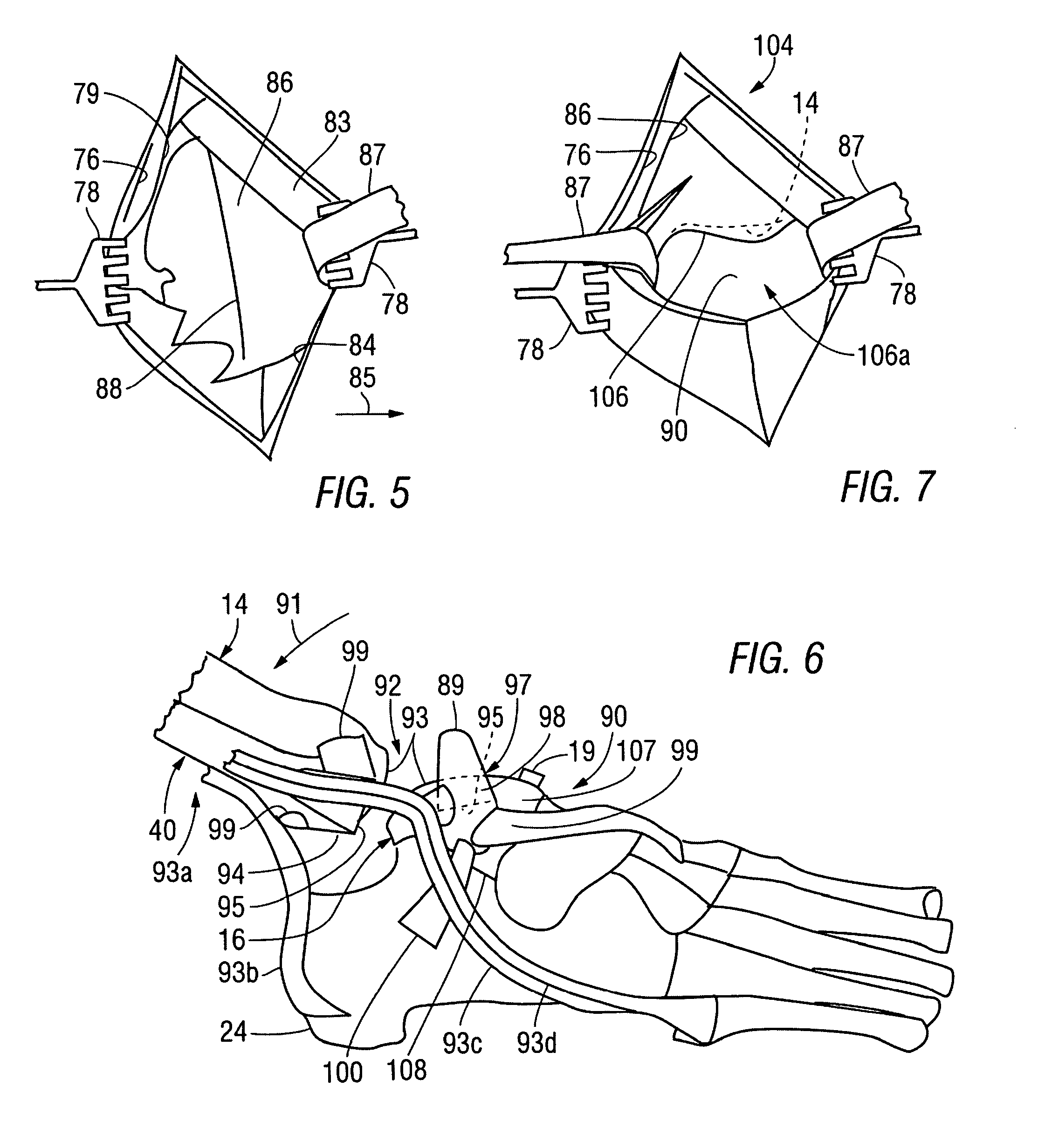Total ankle replacement
- Summary
- Abstract
- Description
- Claims
- Application Information
AI Technical Summary
Benefits of technology
Problems solved by technology
Method used
Image
Examples
first embodiment
[0053]In accordance with the invention, both the socket 26 and the head 30 have spherical contact surfaces. The overall configuration of the construct 70 provides for planter / dorsal flexure in the directions of arrow 34, for flexure in the inversion / eversion directions of arrows 36, for axial rotation about axis 38 and for varus / valgus motion to occur in manners closely simulating normal anatomical ankle movement. The ligaments and soft tissue of the ankle, which remain intact during the installation of the prosthesis 12, freedom of movement and stability at the anatomical level. While subtalar movement has been prevented by fusing the talus 16 with the calcaneus 18, such movement is simulated by the movements available between the head 30 and the socket 26.
[0054]In accordance with a first embodiment of the invention, both the
[0055]In accordance with a preferred version of the invention, several versions of the head 30 are provided as a kit, with variations among the versions occurr...
second embodiment
[0079]In accordance with the invention, mating features are provided within an ankle replacement prosthesis for limiting inversion / eversion rotation while providing for dorsal / plantar rotation. For example, FIGS. 23 and 24 show an ankle replacement prosthesis 400, built in accordance with a first alternative embodiment of the invention to include means for limiting inversion / eversion rotation, in the directions of arrow 402, to a level much less than a permitted level of dorsal / plantar rotation, in the directions of arrow 404. FIG. 23 is a medial view of the prosthesis 400, while FIG. 24 is a partly sectional posterior view thereof. The ankle replacement prosthesis 400 includes a talocalcaneal component 406 having a stem 408 that extends to the weight bearing portion 246 of the calcaneus 229 within the talocalcaneal compound 229 (all shown in FIG. 14). The ankle replacement prosthesis additionally includes a tibial component 409. The talocalcaneal component 406 additionally includes...
PUM
 Login to View More
Login to View More Abstract
Description
Claims
Application Information
 Login to View More
Login to View More - R&D
- Intellectual Property
- Life Sciences
- Materials
- Tech Scout
- Unparalleled Data Quality
- Higher Quality Content
- 60% Fewer Hallucinations
Browse by: Latest US Patents, China's latest patents, Technical Efficacy Thesaurus, Application Domain, Technology Topic, Popular Technical Reports.
© 2025 PatSnap. All rights reserved.Legal|Privacy policy|Modern Slavery Act Transparency Statement|Sitemap|About US| Contact US: help@patsnap.com



